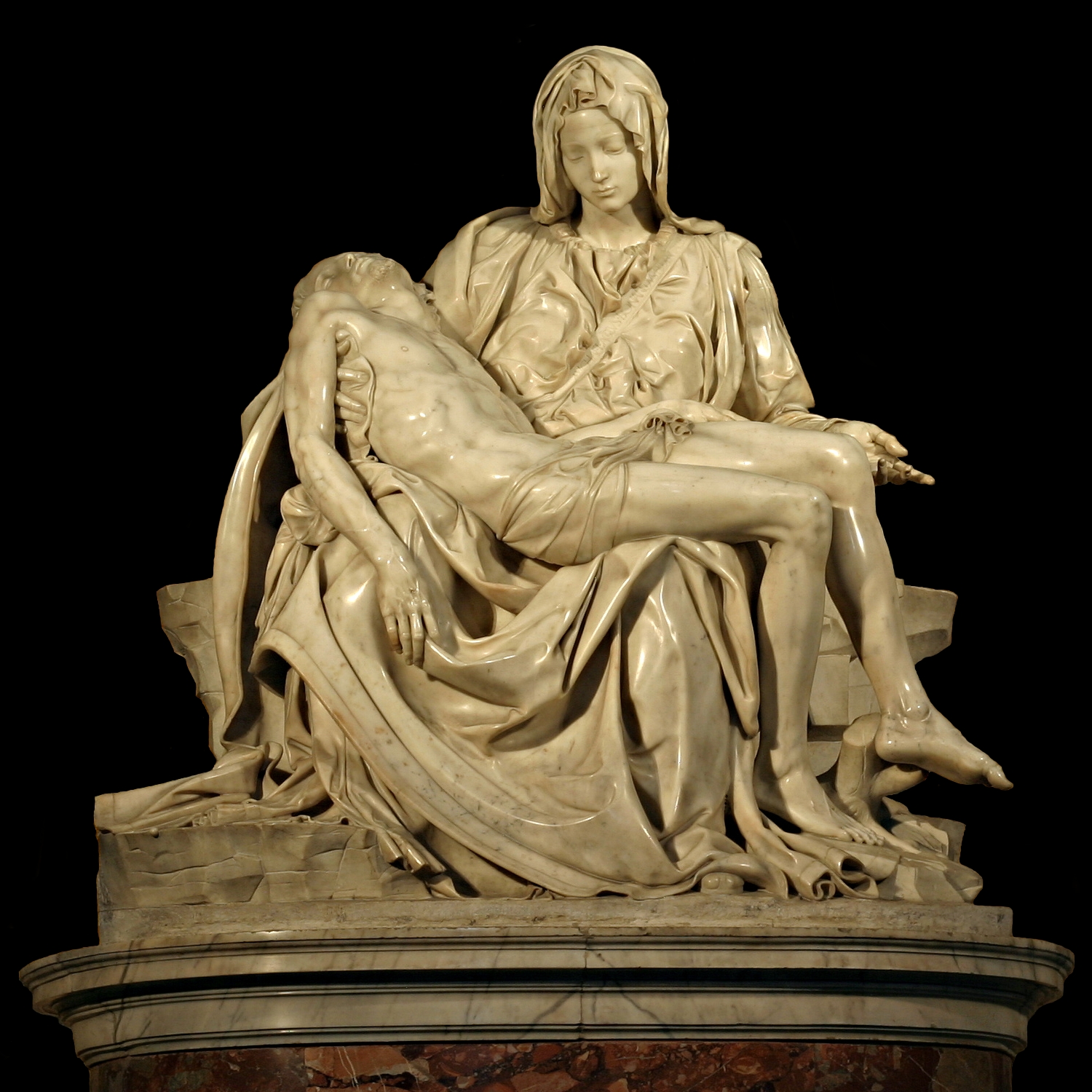The Time Machine – Symposium 2
Second Research: Michelangelo
(6 March 1475 – 18 February 1564)
First piece of work | Bacchus (1497)

Fig 1. Bacchus (1497)
"Bacchus, the Roman god of wine (known as Dionysus in Greek Mythology), was a popular subject with artists of the sixteenth century. He was usually represented with a bunch of grapes and a staff wreathed with vine leaves and ivy. Celebrations in honour of Bacchus were called Bacchanalia. In ancient times, only women were allowed to attend these festivals. Other followers of the god included the satyrs, who were half-human and half-animal. Michelangelo created a statue of Bacchus in 1497. In his work, the god of wine seems a bit unsteady on his feet. A satyr appears behind him." (Cagno, 2008:20)
"Bacchus appears to be swaying, with perhaps his right leg buckling out from under him as he potentially lurches forward. The weight of his body, which is meant in a contrapposto pose to find a centre of gravity, here shifts back and forth, with the head (and a rather comically undersized head at that!) tilted in one direction, the shoulders another, the pelvis yet another, and the legs ready to tumble out from under the staggering, inebriated god. This is a god who is standing up but is more probably about to fall down, a fact that is even structurally and formally incorporated into the entire sculptural ensemble: the wine god would, in fact, fall down if the figure were not buttressed by the presence of the little satyr behind, whose serpentine pose only emphasizes in its torsion the elements of suppressed movement contained within Bacchus himself". (Biow, 2010:111)
Second piece of work | Pietà (1498–1499)

Fig 2. Pietà (1498–1499)
It is a construction that represents the Virgin Mary carrying the body of Christ on her lap. This sculpture was commissioned by the French cardinal Jean Bilhères Lagraula of which was a cardinal and ambassador to the Pope.
The human measures are not met. It is a marble statue of 174cm tall, 195cm long 69cm wide, sculpted with a chisel and hammer. The statue depicts a scene after the crucifixion of Christ. This is his only signed work. We see little besides his signature on the banner across the blank. She has a Florentine style, so a style of the Cinquecento1 as it has a taste for naturalism and interest in human and psychological truth. There are many folds on the clothes. The Virgin is seated. On her lap the dead body of Christ as an ''S''. This position is a sign of abandonment of the corpse. The sculpture forms a triangle, which symbolizes the holy trinity (father, son and holy spirit). Mary's face, is an expression of no pain, because it is home to human suffering, symbolised by Christ. She represents the Lord. His hand opened; it is an offering. This sculpture was made in one year.
Each sculpture is used as an opportunity to respond to a specific aspect. The figure of Bacchus is created in design to regard Neoplatonists influences, Michelangelo was familiar with their ideas carefully. The David (1501-1504) and its turbulent history is detailed policy regarding the role played by them in the Florence of the early 16th Century. Similarities in Bacchus and David is also found in Matthew, a dichotomy, however, first as an internal issue and detached from the outer design. Michelangelo's figures are usually not in a natural freedom, they are rebelling against the prisoner or result in their fate.
Michelangelo's Early life segment
At twenty-one years old, his imitation of The sleeping Cupid led straight to Rome. 1498, Michelangelo was only 22, before signing a contract, guaranteed by Jacopo Galli, with the French Cardinal of San Dionigi, for the plans of his next piece, Pietà, which was in construction within a year. This successful marble sculpture was destined to be placed in the The Papal Basilica of Saint Peter (Italian: Basilica Papale di San Pietro in Vaticano (in the chapel of Santa Petronilla kings of France) - a Late Renaissance church located within the Vatican City. The Pietà of Michelangelo was born from a block of marble, where the artist represents the isolated figures of the Virgin Mary holding the body of Christ in her lap just down from the cross, according to an iconography that, at that time, had found wide acceptance.
Pietà has strong anatomical details and finishes of the drapes, accentuated with translucent effects of the way the light seems to caress the marble surfaces. One of the things that is important in the sculpture is the "very young" the artist wanted to give the face of the Virgin Mary, this choice, strongly criticised by his contemporaries, is justified by the abstract nature of the composition. Between 1962 to 1964, Pieta was moved to New York World.

Fig 3. The David (1501–1504)
Footnotes______________________________________
1) Cinquecento: A term used to describe the Italian Renaissance of the sixteenth century, including the current styles of art, music, literature, and architecture.
List of Illustrations_______________________________
Fig 1. Michelangelo (1497) Bacchus [Marble] At: http://www.backtoclassics.com/images/pics/michelangelo/michelangelo_bacchus.jpg
(accessed:28.03.11)
Fig 2. Michelangelo (1498-1499) Pietà [Marble] At: http://www.arte.it/foto/orig/2f/334-Michelangelo_s_Pieta_5450_cut_out_black.jpg (accessed:28.03.11)
Fig 3. Michelangelo (1501-1504) The David [Marble] At: http://media.web.britannica.com/eb-media/87/60287-050-5124A0CE.jpg (accessed:28.03.11)
Bibliography___________________________________
G, D, Cagno. (2008) Michelangelo. (2nd ed.) USA : The Oliver Press
D, Biow. (2010) In Your Face: Professional Improprieties and the Art of Being Conspicuous in Sixteenth-Century Italy. (2nd ed.) California : Stanford University Press
No comments:
Post a Comment